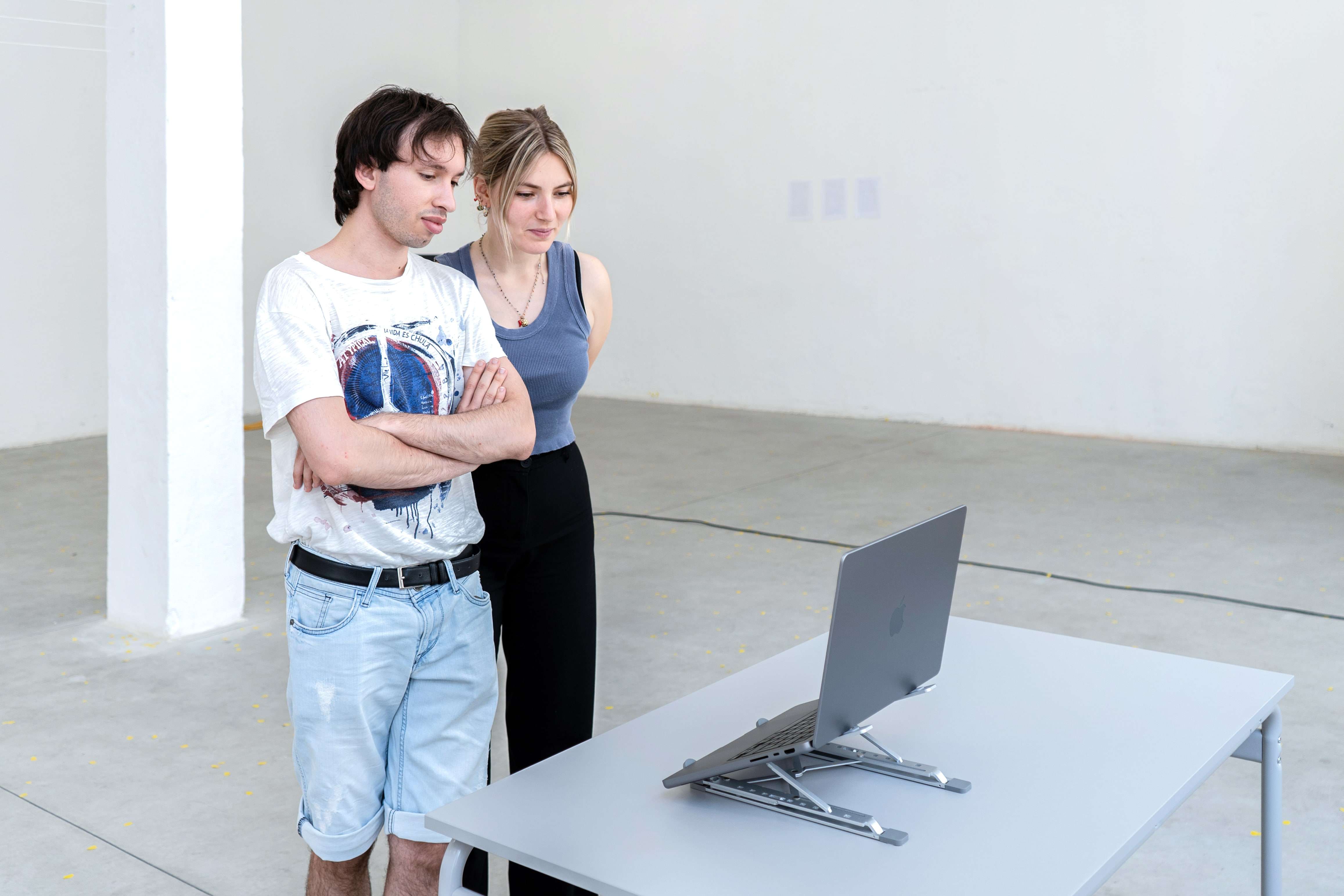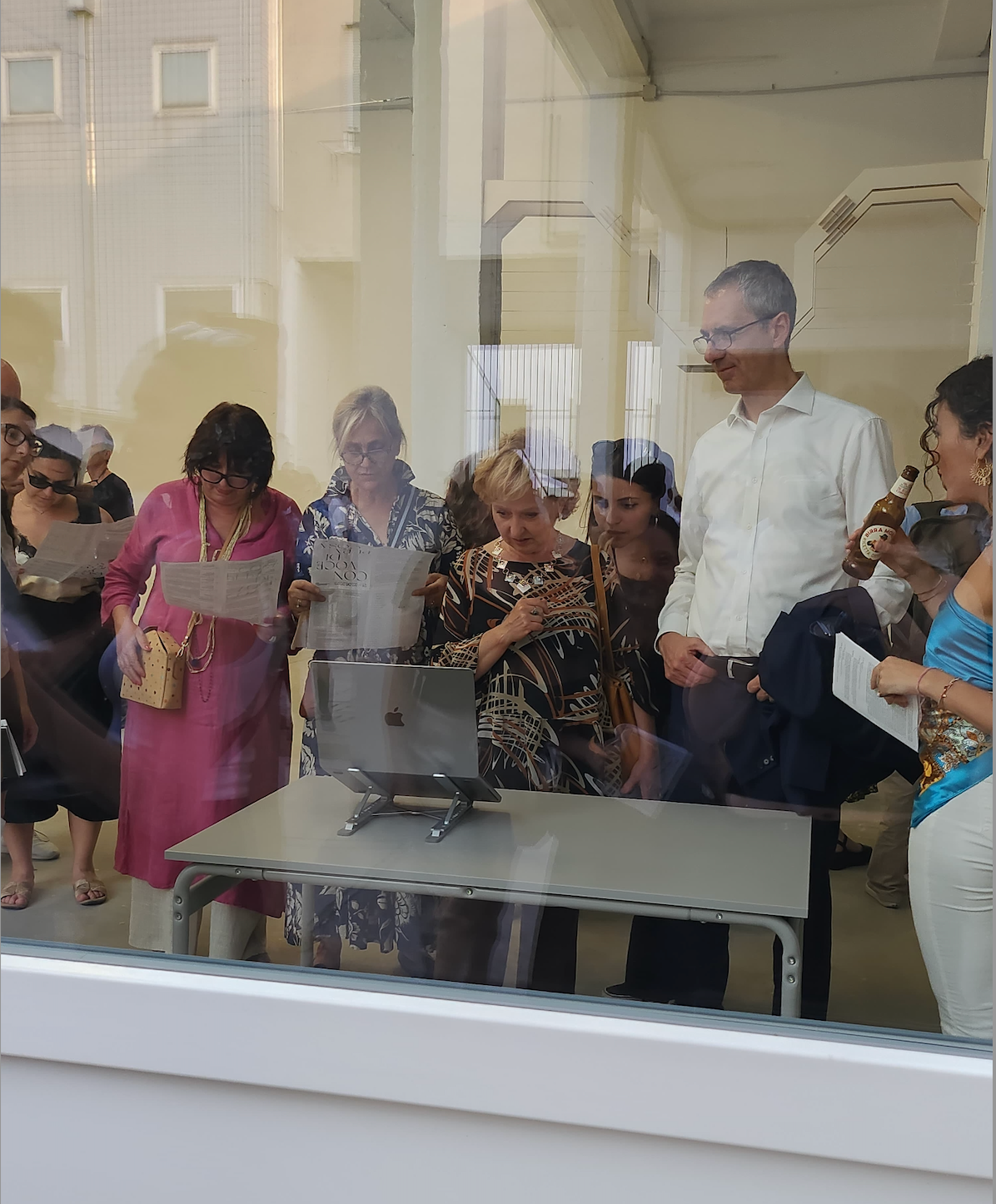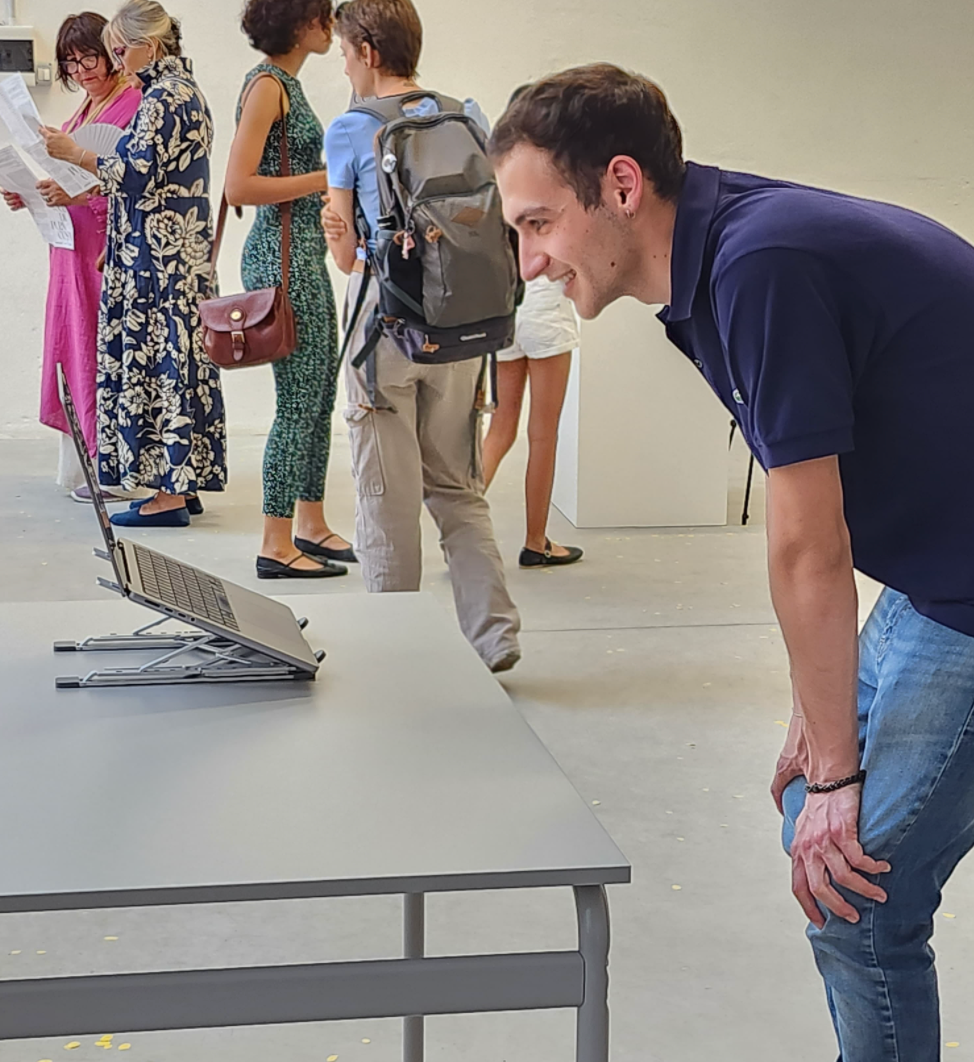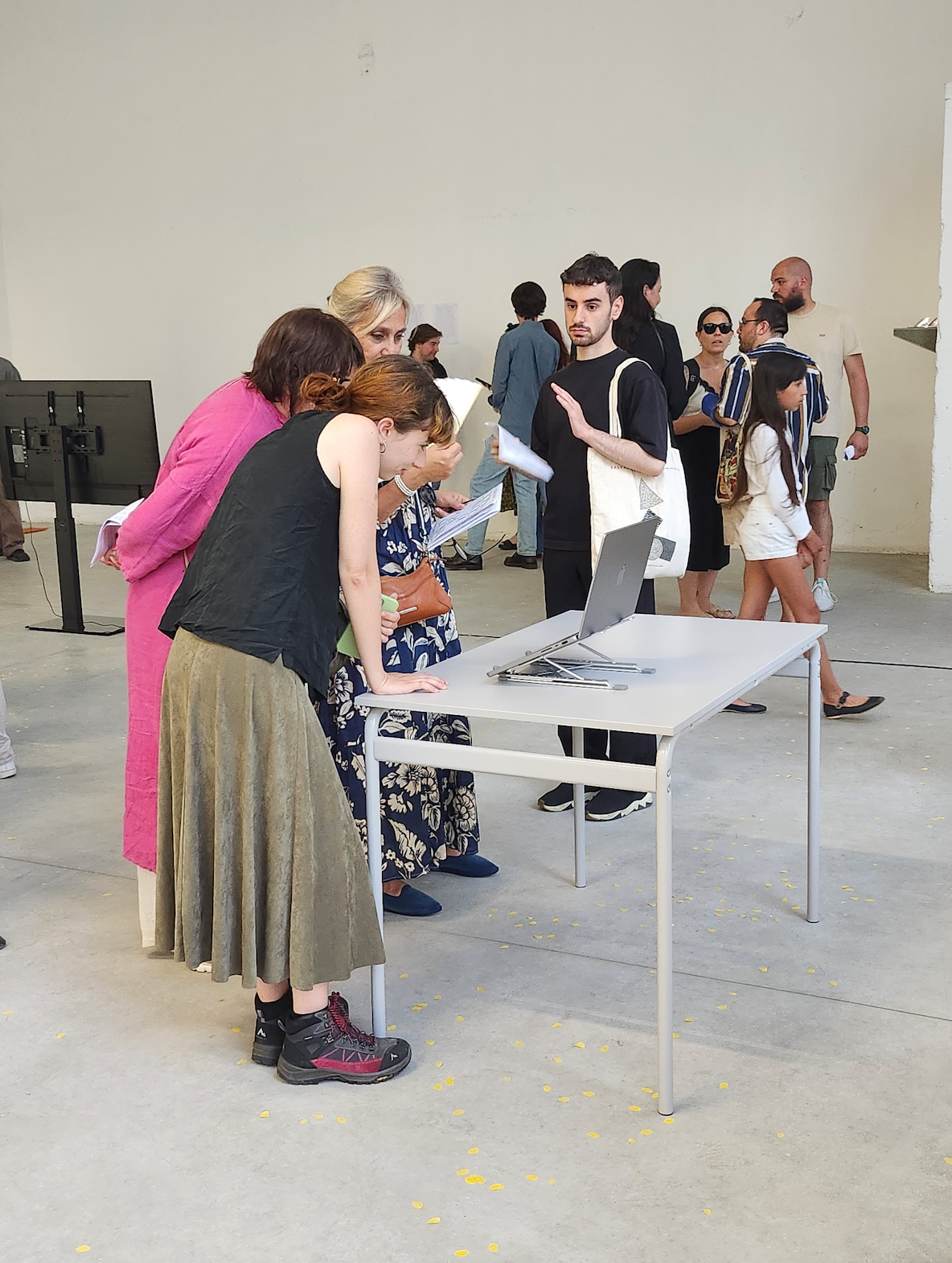Happening.
Laptop, desk, writing stand.
103 x 110 x 67 cm.
The installation reproduces the private environment in which fanfiction usually originated, reduced to its essential elements, such as a desk and a personal computer placed on a typical writing stand. The pc is connected to the account of Dreamy_voice08, the anonymous author who elaborates live a story inspired by the context surrounding the work. The device shows the live creation of the text, in which usual situations are transformed into plot structures by the ghostwriter, who will be using the typical amateur style of fanfiction, with its marked tendency toward romanticization and exaggeration.
The narration of the event transforms its atmosphere into a hybrid between reality and fiction, in which viewers gradually discover their transformation into characters and their entry into a shared imaginary, parallel and synchronic to reality, stimulating that same non-identitarian participatory will that had determined the success of fanfiction. The work is activated at each first exhibition, through a happening that has the exact duration of the opening of the exhibition. After the first day, the device will show the generation of the plot on a loop, transforming the story into a time-shifted architecture, and transposing the past event onto the plane of a collectively constructed fantasy.





Detail of the laptop that broadcast the live construction of the fanfiction.




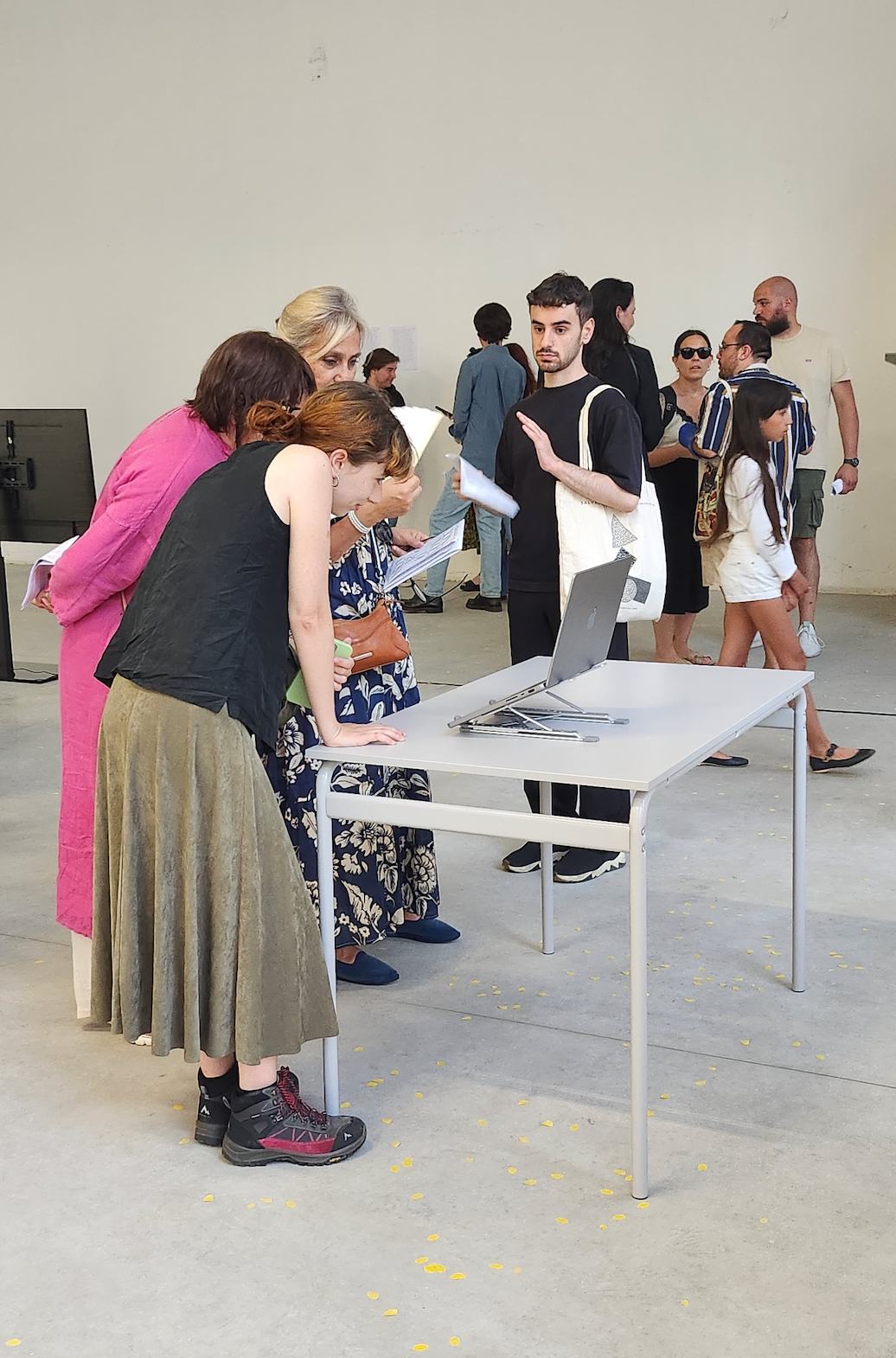
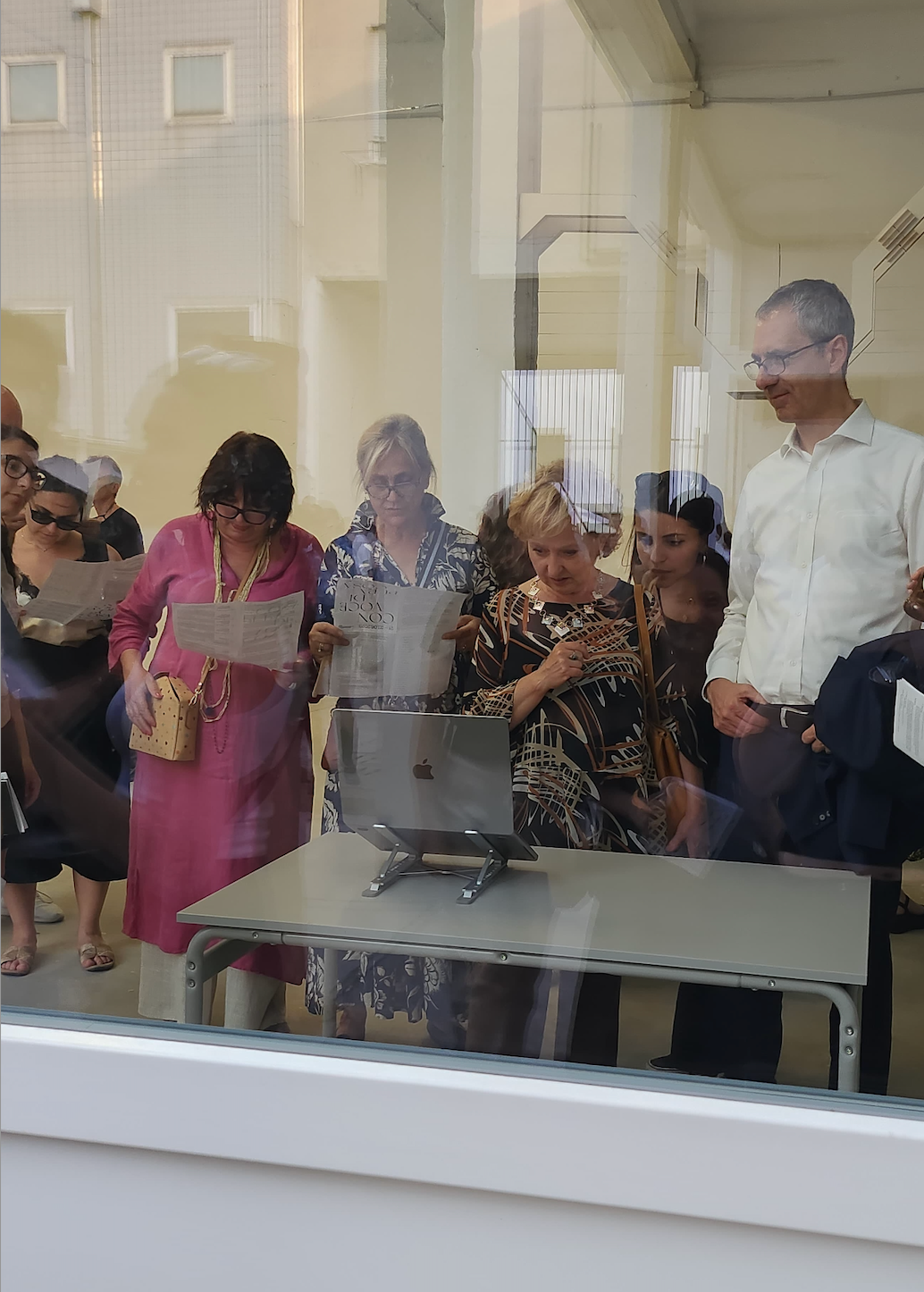
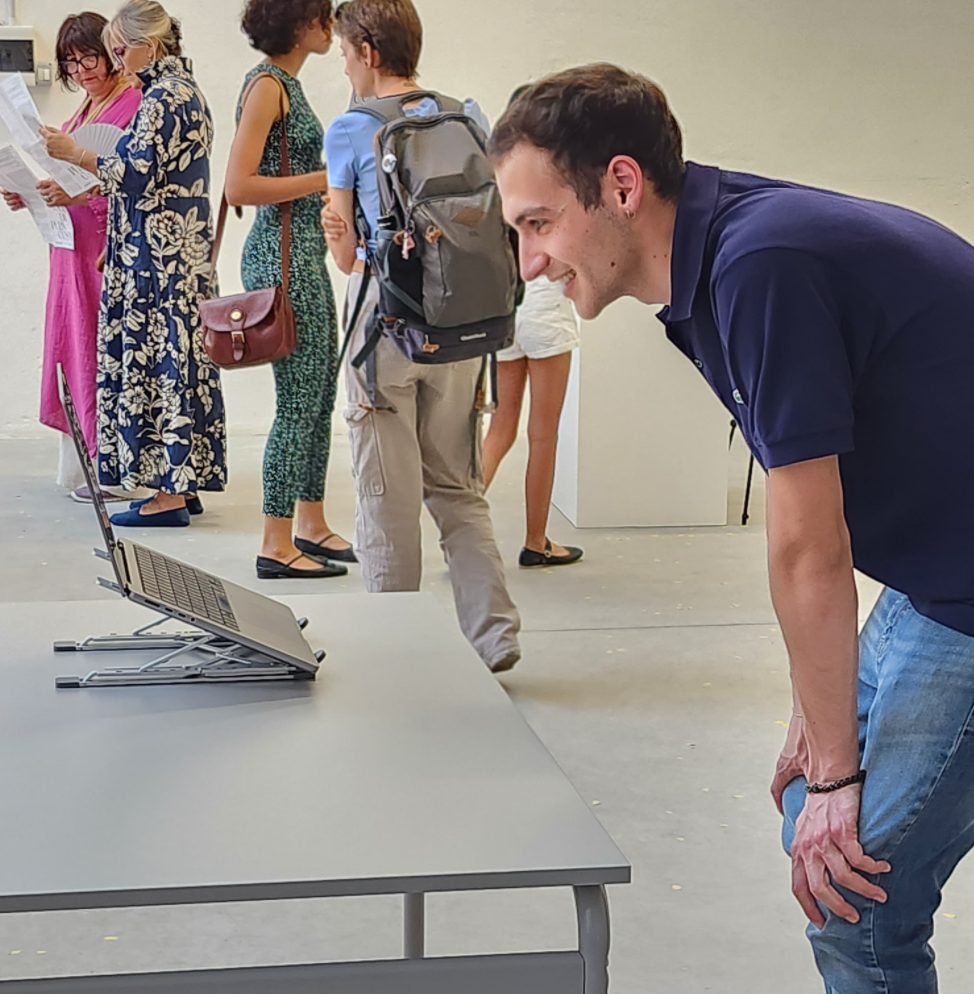
The end of reality
Text by Rosaria Murolo.
In 1991, Philippe Parreno displayed a sign in the gardens of Villa Arson that read "Welcome to Twin Peaks Population: 51,201" identical to that of David Lynch's famous TV show. The work titled "No More Reality" altered the perception of space based on the recombination of landscape and an instantly recognizable image from popular culture, creating an unprecedented architecture through the hybridization of memory, fantasy and reality. That place was not Twin Peaks as much as it was no longer Arson Manor, but a usable non-space thanks to the viewer's identification with the symbols of a parallel and universally shared reality: that of television. A few years later, the artist commissioned writers Liam Gillick and Jack Wendler to write a script for a party that had not yet happened. Snow dance (1995)-called part book, part exhibition and party-had the exact length of the event that hundreds of people would attend two months later. In this way, the book was performed by the guests and served as a time-based architecture. The exhibition that followed was an even different architecture, one created by the party. Parreno's work precedes by a few years the emergence of a world in which self display, self design and self exhibition will become liquid self representations, changeable according to the culture, fashions, environments and community to which one wants to belong, and in which endless platforms/displays are provided in which to give vent to the most imaginative recombinations.
The advent of the internet for home use becomes the long-awaited channel into which to drain the unexpressed feelings and difficulties of a transit generation. Cultural uprisings had ceased in the previous decades, and the remaining injustices seemed to have been smoothed out in a general climate of acceptance, if not even incorporated through the veneer of inclusiveness in literary, film, television representation and fashions. The new digital freedom was easily confused with liberation from cultural oppressions. Much of what the Internet had brought to private life was actually related to the unconscious assimilation of extimate and superficial models: the 00s, had brought with it the reality TV format of the reality show, that is, the staging of personalities without particular talent, seeking notoriety through the exposure of their intimacy.
A particular kind of fascination stemming from the feeling that the exciting part of celebrity life took place beyond visual representation, in a perpetual and electrifying possibility of which the digital medium offered only the crumbs. These outrageous and exciting narratives of two-dimensional characters flattened in the spotlight lent themselves well both to impersonation and to the construction of stories and the recombination of symbols from them. As Claudia Attimonelli analyzes in Pornoculture (2022), the 2000s witnessed the hybridization between showbusiness and politics, between intimate life and spectacle, between personal and public time, through scandal storytelling and sensationalism, conveyed through a widespread and continuously stimulated feeling of empathy. The result of such an unprecedented spectacularization of events, feelings and desires hitherto considered intimate, was that everyone wanted to be part of extraordinary stories hitherto the preserve of the elite or confined to the wildest fantasies of a director or writer, either as protagonist or creator, and finally, they had the means to do so and above all the possibility of reaching an audience.
The general sentiment that spread thanks to this new way of interacting with space imbued the public sphere with moods and dreamlike impulses from each individual's intimate and private life, laying the groundwork for the hybrid and mutable conception of self from which the User, whom Bratton defines as a non-individual individual who modifies and organizes the system in which he inhabits according to his changing desires, would be born. Never before the advent of the Internet had the way of conceiving of oneself and reorganizing space been influenced by the society of the spectacle, whose protagonists were at that point for the first time exposed through a digital showcase that overlooked their private space, revealing the behind-the-scenes, the subtleties and i of their personality, the details of their lifestyle, in a form of horizontal communication, that is, equal for both "actors" and those, until then, mere spectators. As Vincenzo Susca points out in Tecnomagia (2022), "the symbolic and emotional exchange that takes place in the field of communication, of consumption, between shop windows and webcams, triggers new and overflowing narrative plots, restless communities, exuberant fandoms, that is, an endless series of societal figures that are not satisfied with what is offered to them, since they yearn to be on stage, to do the work, to become work, even work without work."
In 2004 EFP was born, the first Italian site to collect fanfiction, authored texts inspired by personalities from entertainment, film, television and literature. The authors (mostly women), reworked the inputs of the entertainment society to give vent to the lack of representation and complexity in the figures that were promulgated as models. Fanfiction was nothing more than a phenomenon as old as the world, namely the viewer's need to intervene, reinterpret and participate in the alternative reality offered to him or her through art. Fanfiction writing is closely related to the construction of scenarios, place, and especially their staging through gimmicks from film and television languages.
In retrospect, we could call fanfiction a time-based architecture of a decade, similar to that of Parreno's party. Thousands of teenagers founded a community in which to construct parallel realities from shared symbols, blur them through behind-the-scenes information, fuse them to the individual but shared fantasies of a generation dazzled by the distant spotlight, under whose light, however, a virtual space was reserved for them. It was a way of sharing one's intimacy that was different from the extemity of today's social media, for it required an architecture whose pillars were the collective consciousness, and it required the construction of a plot whose protagonists were themselves and the universal myths of popular culture. Disillusioned with reality, they took refuge in the construction of a collective fantasy, performative in that it told of the hidden desires, expectations and influences of the early internet age. They broke down loneliness by expanding now into a film, now into a book, hiding behind a character, which unlike them, was followed-loved or hated-for the imagery it carried.
It was a way of building and finding themselves, experimenting with their own and others' fantasies. Nothing that is recounted in fanfiction probably ever happened, just as not everything that was written for Snow dance did happen, but that is not to say that the generation of the text was not telling of the tastes, needs, cultural codes, and lifestyles of the guests. What was created was a non-place, in which fantasy and reality, intimacy and public space, coexisted, dialogued and influenced each other. What the shows us from the mammoth archive of fanfiction, is a desiring machine that has created following a disordered flow of images, feelings, fears and hopes of a generation in transit, now diluted in the radical changes in sociality
and self-representation.
Artist Camilla Gurgone, in her works, plays with different planes of reality mediated by the possibilities of machines and autonomous animal systems. In one of her latest works, "Process the imaginary n 1-2" (2023), the artist entrusts the dreams of friends and acquaintances to the visual representation of artificial intelligence and then prints them on thermal paper. Unconscious desires hybridized to individual experiences and the collective unconscious allocate temporarily, but are destined to disappear again, as in the human mind, only more slowly. We have no control over the matrix, much less experience the perverse polymorphous desire that connects images and words according to the thread of the collective unconscious; on the contrary, we forget even the sensations that trigger it, we atomize what we want in the anxieties and pressures of our culture. We are frightened, then, in the face of these celibate, metallic, solitary machines that produce by pandering to an input, and at the same time (re)produce a capacity we have lost: that of pandering to the construction of collectively produced imaginaries, from the archaeology of intimacy to the collective imagination.
The same generation that produced fanfiction is now confronted with the specter of artificial intelligences that, drawing on collective experience on the Web, generate content from now-forgotten human experiences. It is a prospect that smacks of theft, but it is a modern angst that could be averted if we imagine artificial intelligences as the unconscious matrix of the human mind, in which the thinking of dreams and desires is transformed through the use of free associations, thematic amplification and systemic thinking, so as to make connections, find connections, liberate and generate new thoughts, like that expanded body envisioned by Donna Haraway, a fluid consciousness capable of experiencing different planes of reality and creating new ones. So what might a teenager dissatisfied with reality and a solitary machine generating an alternative version of collective narratives have in common? Both tell us about the past, generating the present; they affirm that reality is no longer enough.
